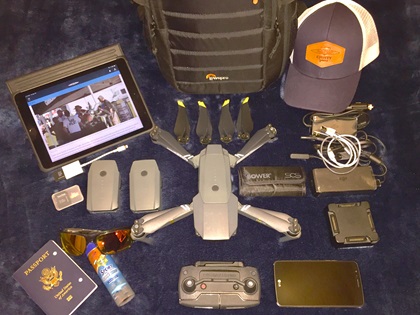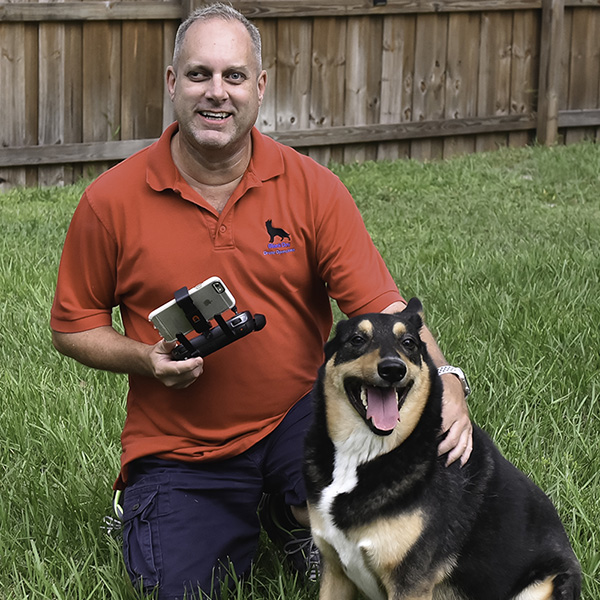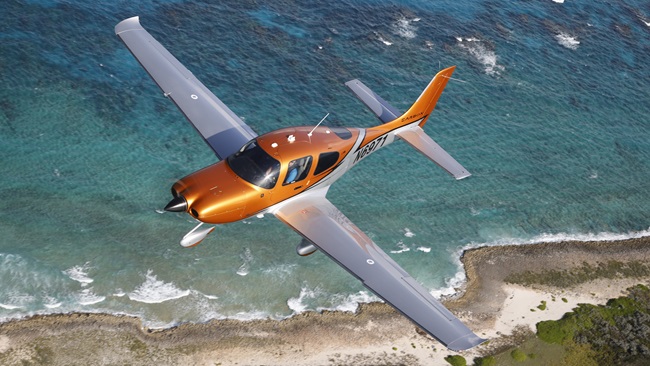Have drone, will travel
How to pack and protect your gear
With vacation season upon us, it's time to have fun and make and capture memories. Don't leave your drone behind, just skip the headaches when traveling by air, land, or sea, with these useful tips.
Get it in gear!
Getting you drone gear organized and ready for vacation travel is the first thing to think about before packing your suitcases and hitting the road. Too often it is easy to get complacent about what you have been toting around in your drone case or bag only to find disappointment when you reach your destination. Where is my extra battery? Where did that charging cable go? Noooo… I forgot my SD card!
So, first things first. Many people love traveling with more portable drones such as DJI Mavic models, but others still prefer the larger birds such as the DJI Phantom series. You can usually get away with a lighter weight backpack for the small drones, but for bigger birds, a larger, hard case is well worth the investment.
This is a good time to make a list of what you'll absolutely need to have with you. Cables and chargers, spare props, lens filters, and SD cards are essential. It's always a good idea to offload the memory card, so make sure to have the proper card reader for your laptop or tablet and a charger for that device. Keep the essentials but toss the old, unused stuff we all typically drag around.
Planes, drones, and automobiles
Now, consider how you are traveling. Remember, if you are flying or taking similar transport, how will you be getting around once you arrive at your destination? Rental car, bicycle, your own two feet? Thinking this through can be helpful. For example, if you plan on lots of hiking to get those scenic mountain shots, or maybe even riding a motorbike around the beaches, can you really lug that big, hard case with a Phantom and a bunch of batteries around? Proper planning will take a load off your shoulders (literally).
Let’s talk about flying with your drone. Yes, on an airplane, as opposed to flying your drone. There are important rules for carrying lithium batteries in your luggage that must be adhered to. The FAA and the TSA offer guidance on carrying lithium ion type batteries, commonly used with popular drones.
Lithium batteries must travel with you in carry-on luggage only. The FAA (and the airlines) do not want them in the baggage hold, out of reach, where a short circuit could cause a huge problem. Regulations and common sense also dictate covering the battery terminals to prevent a short circuit. A paper clip in the wrong place can ruin everybody's day. You can carry batteries in the original manufacturer box, and plastic caps or covers are also widely available. Or, simply cover the terminals with electrical tape. I personally favor Lipo battery pouches. These are inexpensive bags to not only protect your battery, but to help contain a fire in the event of an unexpected thermal runaway.
This rule from the TSA covers batteries up to 100 watt-hours (Wh), which applies to most popular drone models. For example, the Mavic Pro batteries come in at 43.6 Wh and a Phantom 4 battery stores 81.3 Wh of energy. But what if your drone has even bigger batteries? Batteries falling between 101 - 160 Wh may be allowed with airline approval and a maximum of two spare batteries.
Don’t forget the dimensions of your carry-on bag (or drone case). The last thing you want to deal with is being forced to check your drone. This can be done (minus the batteries), but checked baggage is rarely handled with the kind of care you'd use, and if your drone is in a soft case, you will not enjoy waiting at the claim conveyor to see what comes out the other end. This is also where hard cases come into their own. They're more rugged, and those foam inserts will do a great job of protecting delicate gear if it has to be checked.
Be sure to confirm the carry-on dimensions allowed by your airline before you even start to pack. The limits can vary by airline, just enough to cause trouble. For example, Southwest allows carry-on bags up to 10 by 16 by 24 inches, where Allegiant allows up to 9 by 14 by 22 inches maximum. My go-to travel drone is a DJI Mavic Pro that I carry everywhere. I fly fairly often and all my gear fits nicely in a Lowepro BP150 camera backpack. Just small enough to carry on, but spacious enough to carry my drone, batteries, spare props, cables, and even my iPad Pro and cables for all that.

If you are driving in your own car, these rules don’t necessarily apply. But careful packing never hurts, and helps build good habits.
Lastly, be sure to mark your bag and the gear inside! A nice tag is handy but a GPS tracker is even better. A variety of different trackers are on the market, and the price ranges from about $20 on up to the hundreds. But anything is better than nothing in this case and even a Tile tracking device may be all you need. Shop around and do some research to find the right model for you. It can help a wayward drone return to you.
Play, but by the rules
The FAA rules are the same everywhere you go, in the United States and territories, but if you're headed to a foreign destination you need to check the rules. They're often similar, but not always. Some countries place restrictions on "importing" drones, and you might be charged an extra fee going through customs. You'll want to know that in advance, and a little research ahead of time can pay big dividends when you arrive at a foreign airport.
Even though vacation outings are meant to be fun, flying your drone is no less prone to accidents or other unexpected incidents, so never get distracted from flight safety.
What about droning on the high seas? If you are planning on taking your drone on a cruise, your best bet is to check with not only your cruise line, but also find out any details about flying at ports of call. You can bet pretty much all cruise lines are not going to permit flying about the ship as well as their private locations such as Carnival and Royal Caribbean's CocoCay Bahamas and Labadee, Haiti. For other ports, the laws and regulations can vary widely, so it is your responsibility to find out, ahead of time, what may or may not be permitted. Penalties can include confiscation of your drone and potentially worse, depending on the circumstances.
It’s your vacation, have fun!
The main thing is that you have a great vacation and bring back some amazing photo and video memories! Drones have steadily brought us better cameras and built in software that can help create cinema-quality mini movies like never before. Getting your drone to your destination and back home in one piece is the goal, so you can make even more fun memories! Have a great summer—get out there and get some amazing shots!




